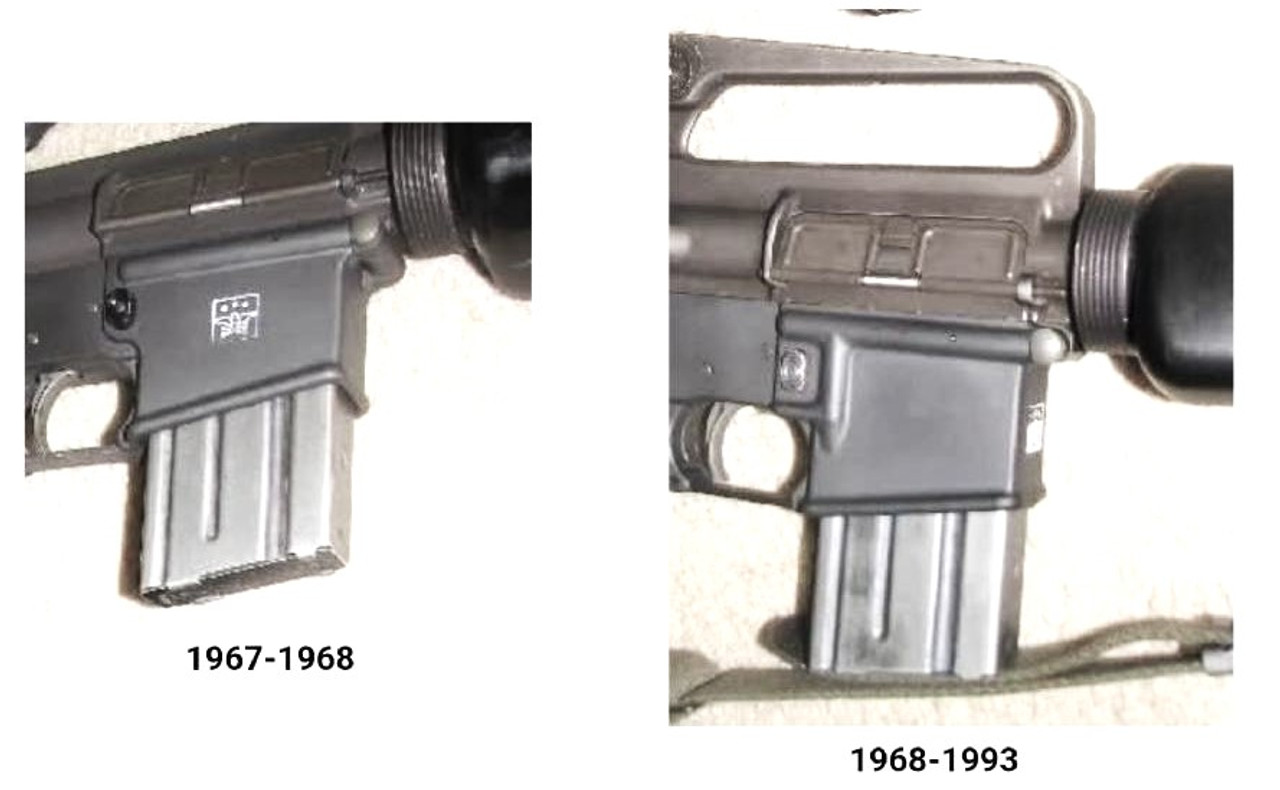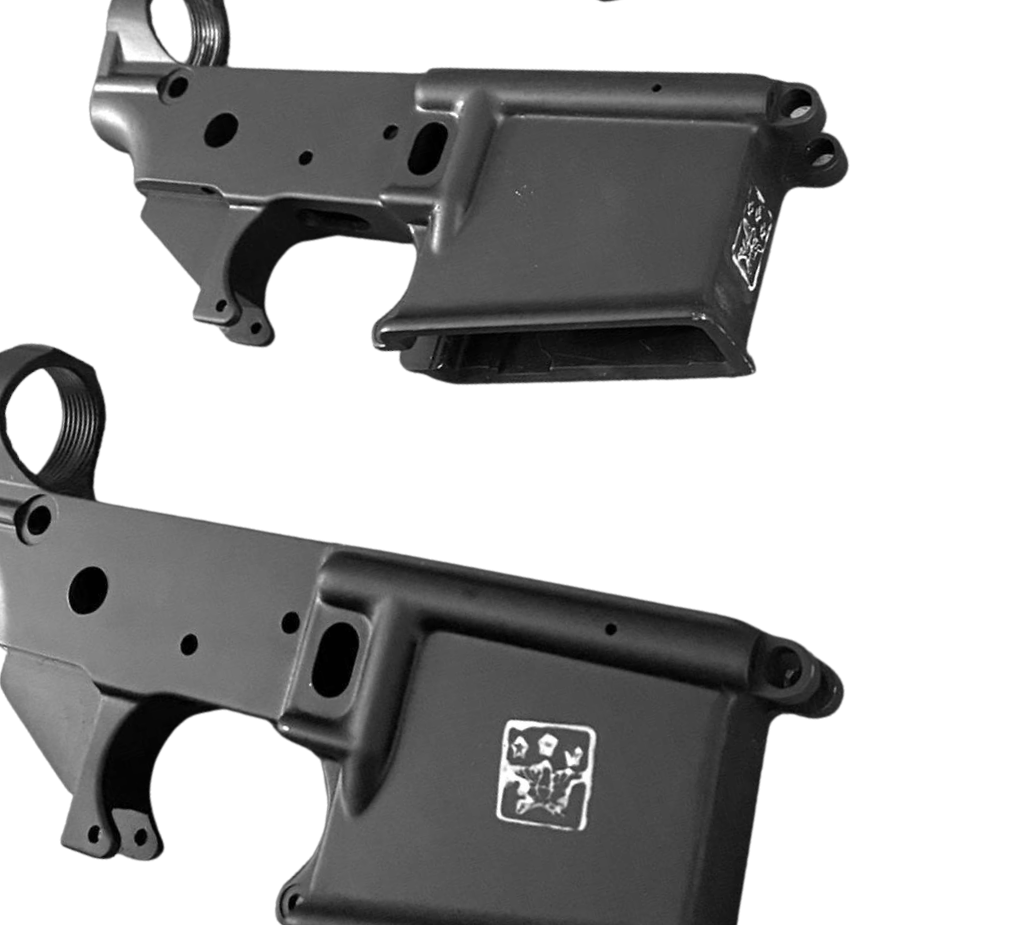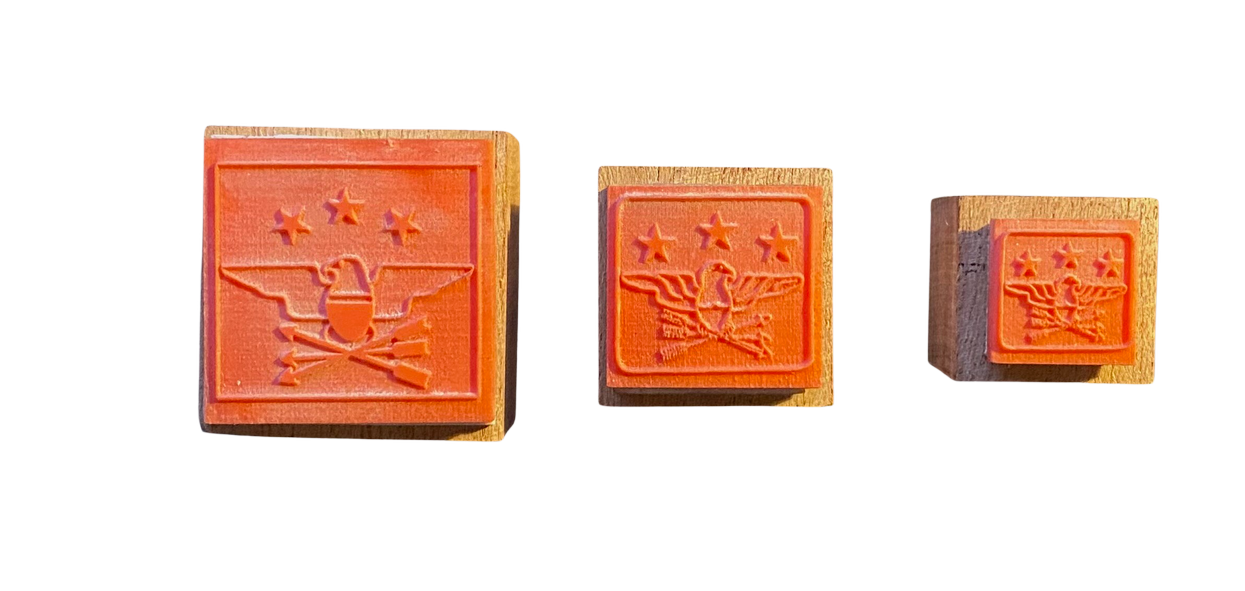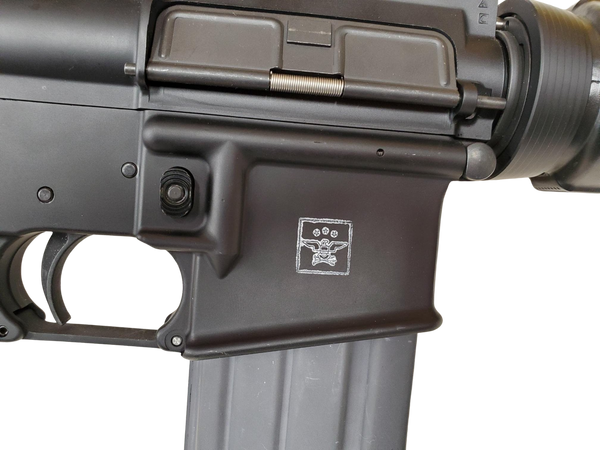Defense Acceptance Stamps - History and useage on the M16
Posted by Charlie's Custom Clones Staff on May 19th 2024
The Evolution of DOD Acceptance Stamps on M16A1 and M16A2 Rifles
The DOD (Department of Defense) acceptance stamps on M16A1 and M16A2 rifles hold significant historical and collector value. These stamps not only serve as a mark of authenticity but also provide insights into the rifle's origin, production era, and military usage. Understanding the evolution of these acceptance stamps can help firearm enthusiasts and history buffs appreciate the rich heritage behind these iconic rifles.
The M16 rifle has a storied past, with its origins dating back to World War II. During this time, various manufacturers such as Colt and Harrington and Richardson and General Motors produced rifles for the military, the latter two companies being awarded contracts in 1968, while Colt had the exclusive production up to that point in time. The lower receivers were marked with specific DOD acceptance stamps to indicate compliance with military specifications. The stamping process involved engraving symbols onto the magwell area of the lower receiver, ensuring that each rifle met rigorous standards before being accepted by the Department of Defense.
In the early years of the Vietnam War, M16 rifles featured DOD acceptance stamps known as "Eagle clutching arrows." These stamps consisted of an eagle grasping arrows in its talons, symbolizing American military might. The presence of these stamps on an M16A1 rifle indicates its production during the Vietnam era, making it highly sought after by collectors and enthusiasts alike.
As time progressed and advancements in firearms technology emerged, the M16A2 was introduced as an upgraded version of its predecessor.
The significance of DOD acceptance stamps extends beyond their historical value. Collectors often place a premium on rifles with intact or well-preserved stamps, as they contribute to a firearm's overall authenticity and desirability. Rifles bearing original DOD acceptance stamps are highly sought after by collectors aiming to create comprehensive and accurate military firearm collections.

History of DOD Acceptance Stamps
The history of DOD acceptance stamps on M16A1 and M16A2 rifles is a fascinating one, as it not only tells the story of these iconic firearms but also provides valuable insights into their origins and authenticity. These stamps serve as a mark of approval from the Department of Defense (DOD), indicating that the rifle has met the required specifications and standards for military use. By examining the specific DOD acceptance stamps used during different eras, we can gain a deeper understanding of the evolution of these rifles and their significance in both Vietnam War and World War II contexts.
DOD Acceptance Stamps during Vietnam Era
During the Vietnam War, the DOD utilized specific acceptance stamps to mark M16A1 rifles that were manufactured or refurbished for military use. One commonly seen stamp is the "Eagle clutching arrows" symbol, which represents government ownership. This stamp typically appears on the lower receivers or magwell area of the rifle. It consists of an eagle with its wings spread wide, clutching a bundle of arrows in its talons. The presence of this stamp indicates that the rifle was accepted by the DOD and authorized for use by military personnel.
In addition to the "Eagle clutching arrows" stamp, another commonly found marking on Vietnam era rifles is a three-letter code followed by a number. These codes represent various manufacturers such as Colt, Harrington & Richardson, General Motors Hydromatics Division, and others involved in producing these firearms for military contracts. Each manufacturer had their own unique code assigned to them by the DOD, allowing for easy identification and tracking.
The presence of these specific acceptance stamps on an M16A1 rifle adds historical value and collectibility to it. Firearms enthusiasts and collectors often seek out rifles with authentic Vietnam era acceptance stamps as they provide a tangible connection to that tumultuous period in American history. These stamps serve as a testament to the rifle's service and authenticity, making them highly sought after by those interested in preserving and commemorating this significant era.
DOD Acceptance Stamps during World War II
While the M16A1 rifle is most commonly associated with the Vietnam War, it is important to note that its predecessor, the M1 Garand, also played a crucial role in World War II. During this period, the DOD utilized different acceptance stamps to mark rifles manufactured for military use. One of the most notable markings seen on World War II-era rifles is the "U.S." stamp followed by a flaming bomb symbol. This stamp was used to indicate government ownership and can be found on various parts of the rifle, including the lower receivers.
In addition to the "U.S." stamp, another marking commonly found on World War II-era rifles is a manufacturer's code or initials. These codes were assigned to different companies involved in producing firearms for military contracts during that time. Examples include "R.I.A." (Rock Island Arsenal), "S.A." (Springfield Armory), and "W.R.A." (Winchester Repeating Arms). These codes provide valuable information about where and by whom these rifles were manufactured. The WWII stamps were metal embossing, as opposed to the stenciling and paiting found during the Vietnam war era.
When comparing DOD acceptance stamps on M16A1 and M16A2 rifles, it becomes evident that they evolved over time to meet changing military requirements and specifications. The transition from World War II-era rifles to Vietnam era rifles marked a significant shift in design and functionality. The acceptance stamps used during each era reflect these changes and serve as visual indicators of their respective historical contexts.
Transition of Acceptance Markings from Vietnam to post-Vietnam era.
The rifles accepted by the US Department of Defense in 1967 and 1968 were marked with a white stamp on the left side of the magwell, which is a medium size stamp. Rifles accepted from 1969 to 1993, to include many M16A2 rifles had a small stamp to the front of the magwell. H&R rifles had a larger stamp on the right side of the magwell. What is less clear, is whether H&R rifles where changed to the forward magwell after 1968.

Conclusion
The evolution of DOD acceptance stamps on M16A1 and M16A2 rifles has played a minor role in the history and collectability of these firearms. These stamps serve as important markers in distinguishing between Vietnam era and post-war rifles, providing valuable information to firearm enthusiasts and collectors.
The DOD acceptance stamps on M16A1 and M16A2 rifles have evolved over time, reflecting changes in manufacturing processes and military specifications. These stamps hold historical significance, allowing us to trace the lineage of these iconic firearms back to their origins. The transition from the Colt monopoly on M16 production to the expansion of manufacturers, and then back to Colt. The advancement from A1 to A2 marked an advance in the development of these rifles, with improvements in reliability, durability, and overall performance.
For firearm enthusiasts and history buffs alike, understanding the significance of DOD acceptance stamps is an interesting aspect when learning about the history of military rifles and also in the collecting and building of military clone M16 style rifles.
Charlie's Custom Clones offers three sizes of DAS stamps available for sale


